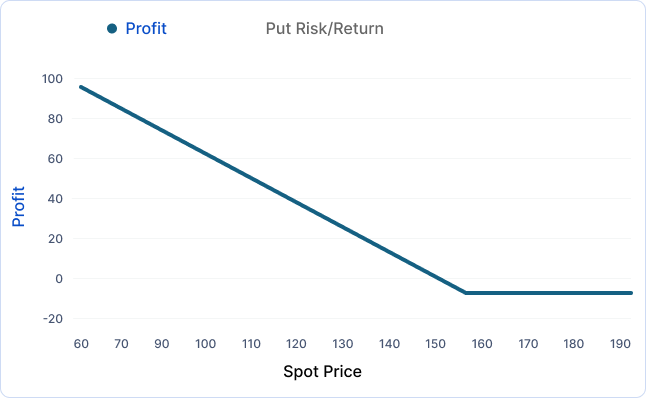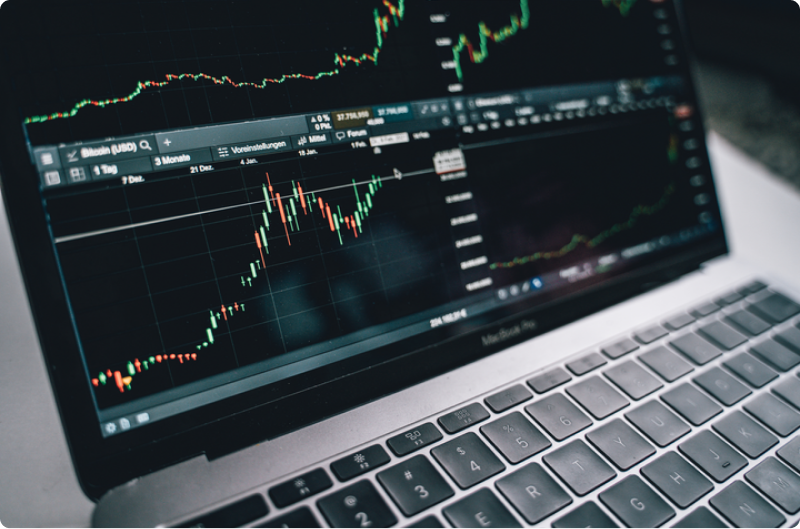
Options trading is an often overlooked aspect of stock trading that can benefit investors and traders. Sure, options trading also carries a high amount of risk but also a high reward. Understanding the risk/return ratio is one of the essential aspects of trading options.
In this article, we’ll take a quick dive into understanding options, their structures, their risk profiles, and why options trading is an essential skill.
Options Trading: The Basics
You can use options as an asset to make speculative trades, or you can use them to protect your stock portfolio and enhance your returns. Options traders can take a directional view on a stock, in the same way they might buy or sell shares.
What Are Options
“>Options give the buyer the right, but not the obligation, to buy or sell
“>shares at a set price on or before a specific date. Option contracts available on stock exchanges are standardized, with a specified number of shares per contract, expiry date, and strike price.
The seller of the option takes on a risk, which is that the market moves, and the option is exercised with a loss for the seller. To compensate for this risk the seller is paid a fee to write the option.
“>Key Terminology
“>There is some terminology that you need to understand when talking about options trading. Here’s the list of the contract terms:
Spot price: Current market price of the underlying shares of the options contract.
Strike price: This is the preset price at which the option buyer can exercise the right to buy or sell the underlying shares in the options contract.
Expiry date: This is the last day of the contract on which the options buyer can exercise his or her right to buy or sell shares.
Premium: The amount of money that the buyer pays to the seller, also known as the writer, of the option.
“>At the money (ATM): Indicates that the strike price is close to or at the same level as the spot price for the shares.
“>Out of the money (OTM): Refers to strike prices that are far away from the spot price in terms of profit.
“>In the money (ITM): These are strike prices that are far away from the spot price but are in profit for the buyer of the option.
Benefits of Options Trading
“>Options allow investors and traders to take on large positions with relatively small amounts of capital. This is thanks to the intrinsic leverage incorporated into the options contract. This aspect means that traders can get exposure to price movements with large risk/return profiles.
Hedging & Risk Management
“>Using options can allow traders to protect their portfolios or enhance
“>returns from downside volatility. Buyers of a put option can protect their long stock position from a fall in the spot price.
“>The put contract acts as a form of insurance from downside volatility. If the spot price drops significantly the option buyer makes a profit from selling the contract. The income can offset the losses and preserve capital.
Income Generation
Sellers of call options with long stock positions, known as covered calls, can collect premiums on the options sold. This strategy is particularly useful when stock prices are not expected to move significantly.
In neutral or sideways markets, the option will expire worthless generating an extra income for the covered call seller.
Defined Risk
Options contracts have a limited risk for the buyer. The total risk of an options position for the buyer is limited to the premium paid. Whereas the upside is potentially unlimited in the case of a call option.
For put options, the upside is limited to the spot price of the stock minus the premium, as the value of a stock cannot fall below zero.
“>Calls Options
A call option gives the buyer the right to buy the underlying shares in the option contract. The contract defines the number of shares per contract, the expiry date, and the strike price. To buy the contract the buyers pay the seller a premium.
The buyer enters a call option trade expecting the share spot price to rise. If the share price rises above the strike price plus the premium paid, the buyer can make a profit by exercising the right to buy the shares.
“>Call Risk Profile
“>As mentioned earlier a call option is limited in risk by the amount of the premium. While the upside is unlimited as in theory there is no cap on the price of a stock. The image below shows the risk/return profile of a long call option.
“>The strike price is 100, and the premium is 10. We can see that once the spot price reaches 110 the option trade is breakeven, Further moves higher of the spot price will generate a profit for the call buyer.

Put Options
“>A put gives the buyer the right to sell the underlying shares, again at a set number of shares per contract, expiry date, and strike price. The seller of this type of option also receives a premium to compensate for the risk involved.
“>With a put option the buyer expects the spot share price to decline before the expiry date. If the share price declines below the strike price minus the premium paid the buyer makes a profit.
Put Risk Profile
“>In the image below we can see the risk/return profile of a long put position. As mentioned, the downside risk is limited to the cost of the option, while the return is limited to the spot
price minus the premium paid.
How Options Are Quoted
“>In both cases above, buyers and sellers can trade their options contract until the day of expiry. This means that if a buyer sees the value of the option increase, they can sell the option back to the market for a profit.
“>Options on exchanges are quoted for almost all of the stocks on the exchange. What changes among the different quotations is the market liquidity. This term refers to the number of bids and offers and the volume of the orders.
“>Shares in Tesla or Apple have a high market liquidity, that is there are many buyers and sellers and plenty of market depth.
“>The options pricing page will show the market ticker for the underlying shares, the string of strike prices, bid and offer prices, and the expiry date. Trading options of a stock with high market liquidity allows you to enter and exit the trade swiftly.
Early Exit
Consider buying an option paying a premium of $1,000 the expiry is in 2 weeks, and after 1 week the spot share price has moved considerably. Thanks to this volatility, the option is now priced at $1,500.
You may decide to keep the trade on, expecting the market to continue moving. However, you might also decide that the market may retrace from here. At this point, you can sell your option back to the market and make a profit.
Conclusion
“>We have seen how options trading can be a lucrative market with a defined risk for buyers. Options contracts can also mitigate the downside risk of a portfolio, acting as insurance. In other cases, options can generate an income in stable markets.
Options trading can be a rewarding activity and it’s necessary to fully understand the risks. Writing or selling call options can be an extremely risky activity given the unlimited downside risk. We strongly recommend gaining the necessary knowledge and expertise before taking on options trades.


